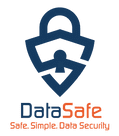Our personal devices and the network may carry vital business information but are often left from the company’s backup policies. A hardware failure, a cyberattack, or accidental deletion can leave you with lost data, so a recovery solution is essential. IDC FutureScape’s 2024 Predictions states that cyberattacks targeting small and medium businesses will become more prevalent by 2025. This alarming forecast highlights the need to mitigate risks and address a proper backup solution within organizations.
Continue reading to learn about backup strategies and why they should be integral to your data protection strategy.
Why Have Backup Solutions?
Studies reveal that there were nearly 150 data breach incidents per thousand people in the USA during the third quarter of 2023. In the face of such pervasive threats, backup becomes a critical line of defense, safeguarding against the diverse scenarios that can lead to data loss and compromise. In addition to protecting your information from potential threats, here are some reasons why the strategy is non-negotiable:
- Hardware Failure: Hard drives and SSDs fail like any other electronic device. Backup ensures the information remains safe even if the device fails, helping restore it on a new device.
- Data Corruption: Software errors, viruses, or malware can corrupt files and render them unusable. Backup provides a means to recover uncorrupted file versions, minimizing the impact of corruption.
- Accidental Deletion: If you have inadvertently deleted essential files or folders, leading to data loss, backup allows you to restore these files. You can prevent permanent loss and resume your work without delay.
- Theft or Loss: Data are susceptible to theft or loss, especially on mobile devices such as laptops and smartphones. With backup, even if the physical device is lost or stolen, the information remains accessible and can be restored on a replacement device.
- Cyberattacks: Even with the best antivirus software, no system is entirely free from cyberattacks. Backups can save you from the chaos of a virus infection by allowing you to restore your files.
Reasons Your Data Might Be at Risk
The following are some potential factors that can add to your data management risks.
Decentralized Workplace
Employees are spread across the globe in different spaces and time zones. This reduced visibility over endpoint devices, like laptops, tablets, and POS devices, may increase the probability of cyber threats and attacks. Since employees and their systems continuously move, a more central and unified management strategy should exist. You must develop management programs to control organizational resources, regardless of location, and support an expanding hybrid workforce.
Employee Unawareness
Remote employees have become attractive targets for phishing and account takeover assaults. In fact, reports state that 94% of cloud users are targeted by hackers every month. Clicking on links, opening documents, or disregarding security warnings can result in information theft or system failure. Once the cyber pathogen infiltrates one user system, it can rapidly spread to others within the network, compounding the threat exponentially. This highlights the importance of providing comprehensive cybersecurity training to employees to mitigate the risk of human error.
Antivirus Inefficiency
Modern-day malware is diverse and powerful, and more than general antivirus programs are needed to protect endpoints efficiently. While traditional antivirus solutions are crucial in detecting and blocking known malware, they often must catch up when identifying sophisticated and emerging threats.
Common Strategies for Comprehensive Data Protection
Modern malware variants are adept at evading traditional antivirus measures, highlighting the need for robust security solutions. A multifaceted approach is essential to strengthen your company’s data against diverse cyber threats. Alongside traditional antivirus measures, additional security precautions must be implemented. Here are some suggestions:
1. Provisions for Application Whitelisting: By allowing only approved applications to run, you can significantly reduce the risk of malware infiltration.
2. Multi-Factor Authentication (MFA): MFA adds an extra layer of security by requiring users to verify their identity using multiple authentication methods, preventing unauthorized access attempts.
3. Network Access Control (NAC): NAC regulates access to the network based on predefined security policies, ensuring that only authorized devices and users can connect.
4. Updated and Patched Software: Regularly updating and patching software helps to close known security vulnerabilities, minimizing the likelihood of exploitation by cyber attackers.
5. Advanced Anti-Malware Software: Adequate protection requires deploying anti-malware solutions capable of detecting and neutralizing known and emerging threats.
Embracing these proactive strategies reduces the risk of infiltration and fosters a resilient security posture capable of adapting to evolving challenges. A practical and user-friendly backup and recovery solution ensures that business operations can continue with minimal disruption, safeguarding against financial losses and reputational damage.

Five Best Data Backup Practices for Your Business
The key to a robust backup solution is a well-thought-out strategy for handling data loss and system failure. Here are some best practices to ensure maximum protection of your critical information.
Frequent Backup
Regular and consistent backups are vital for safeguarding your business’s data against common threats. By backing up information frequently, you reduce the risk of loss and ensure that you have recent critical files available for recovery. Automated backup solutions can simplify this process, ensuring backups occur consistently without manual intervention.
Cloud Backup with Intelligence
Cloud backup solutions provide off-site storage, protecting data from on-premises disasters and enhancing overall resilience. They also use advanced algorithms and analytics to optimize storage, prioritize backups based on importance and frequency of access, and simplify recovery processes.
Aligning Backup Strategy to Service Level Demands
Different types of data and business processes have varying requirements regarding backup frequency, retention periods, recovery time objectives (RTOs), and recovery point objectives (RPOs). Aligning your backup strategy with your service level demands ensures that resources are allocated appropriately based on the criticality of information and applications. This approach optimizes backup efficiency, reduces costs, and prioritizes the protection of critical assets.
Encryption and Data Security
Robust encryption mechanisms ensure that backup data remains secure during transmission and storage. This protects sensitive information from unauthorized access and helps you comply with data protection and privacy regulations. By incorporating encryption into backup processes, you can mitigate the risk of breaches.
Endpoint Protection
An endpoint is any device connected to a network for creating, distributing, accessing, or preserving information. These devices serve as input points at the network’s end. Endpoint protection solutions ensure that data residing on these devices is backed up regularly, even when users are remote or offline. This approach helps mitigate the risk of loss associated with device failures, theft, or malware infections.
Many businesses have backup solutions but often overlook the need for endpoint backup. Losing critical information can result in a loss of business and a hindrance to employees’ work. Failing to secure and back up endpoints in industries such as healthcare can also result in a compliance point with HIPAA or SOC2 regulations. Therefore, having an endpoint data protection plan is crucial, especially in today’s digital world, where remote work is standard.
This is where Data Safe Group LLC comes in. We understand the challenges of securing data in today’s work environment. We offer comprehensive services that make your information safe, secure, and available. Don’t let security concerns hold you back; restricting access could hinder your progress more than it helps. Connect with us to manage your data efficiently and cost-effectively.

